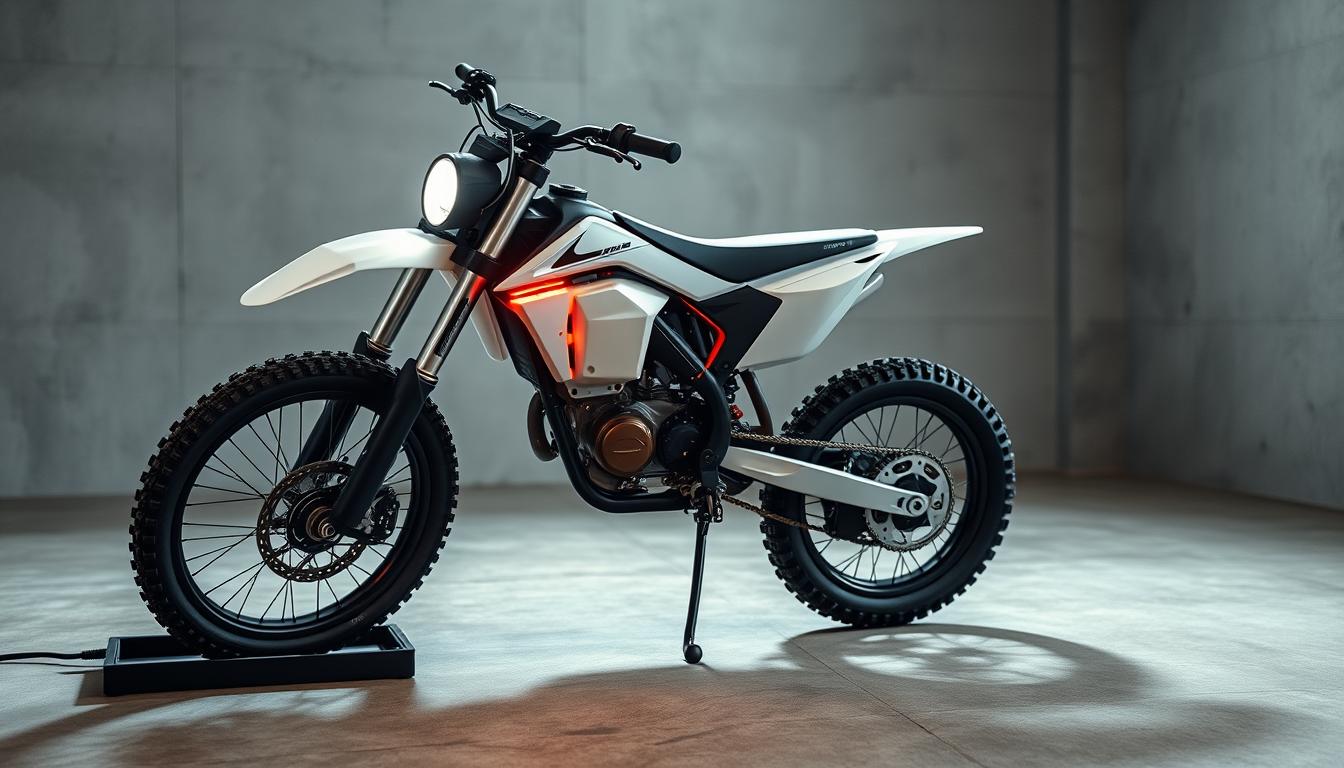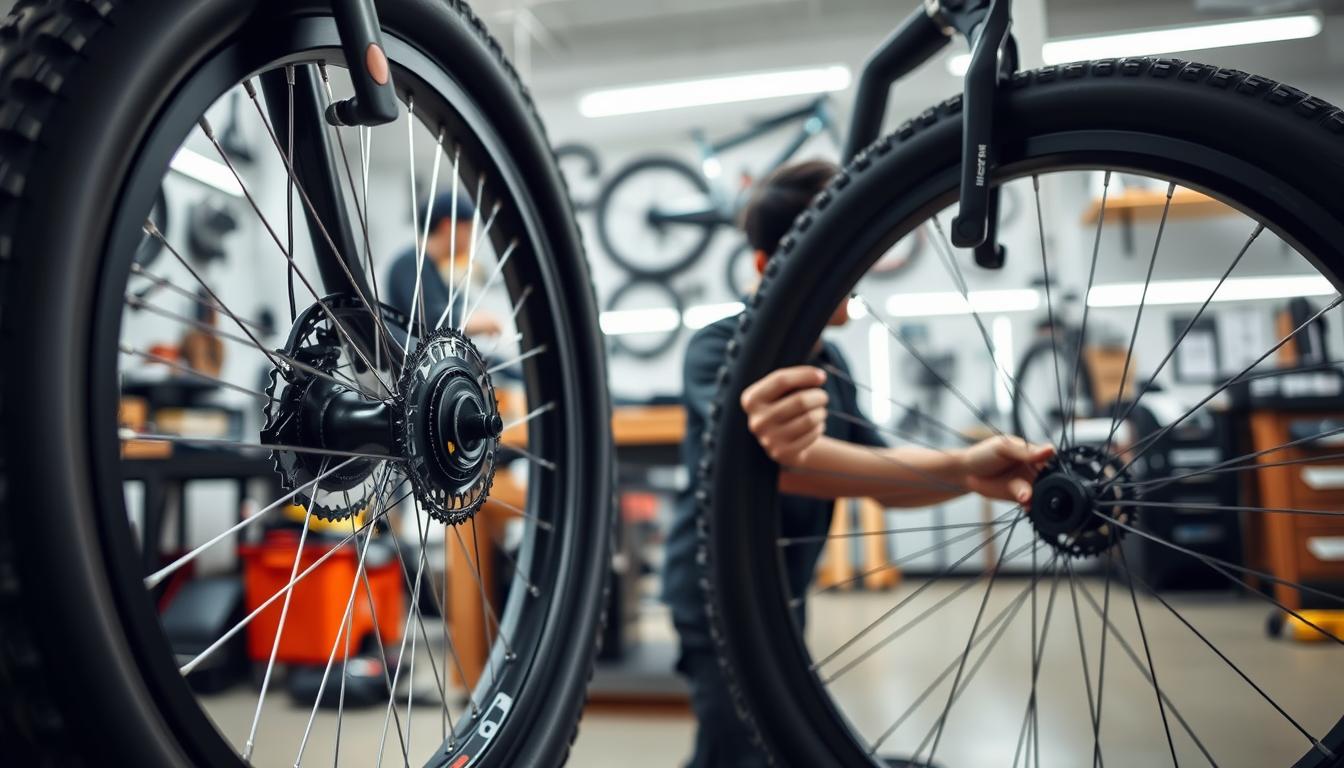Maintaining the correct tire pressure is crucial for your e-bike’s performance and safety. Incorrect pressure can lead to decreased control and increased risk of flat tires or accidents.

Proper tire pressure ensures optimal performance, safety, and longevity of your e-bike’s tires. Understanding the different measurement systems, such as PSI and BAR, is essential for maintaining the right pressure.
By the end of this guide, you’ll be equipped with the knowledge to properly maintain your e-bike’s tire pressure for a smoother and safer ride. This comprehensive guide will walk you through the process, helping you understand the importance of correct pressure and how to achieve it.
The Importance of Proper Tire Pressure for EV Bikes
The importance of proper tire pressure for EV bikes cannot be overstated, as it directly impacts safety and efficiency. Maintaining the correct tire pressure is crucial for ensuring a smooth ride and preventing potential hazards.
Safety Implications of Incorrect Tire Pressure
Incorrect tire pressure can lead to serious safety issues. Underinflated tires are prone to pinch flats, where the tube gets pinched between the wheel rim and the ground, causing a flat tire. On the other hand, overinflated tires can result in blowouts, where the tire could potentially blow off the rim, leading to accidents and injuries. Key safety concerns include:
- Pinch flats due to underinflated tires
- Blowouts resulting from overinflated tires
- Reduced traction and control, especially at higher speeds
Performance Benefits of Optimal Tire Pressure
Optimal tire pressure not only enhances safety but also improves the performance of your EV bike. Properly inflated tires reduce rolling resistance, improving efficiency and extending your battery range. Additionally, optimal tire pressure improves traction, maneuverability, and overall control of your e-bike. The benefits include:
- Reduced rolling resistance for improved efficiency
- Enhanced traction and control
- A more comfortable ride due to the right balance of pressure
Understanding EV Bike Tire Pressure Basics
To maintain your EV bike’s performance and safety, it’s essential to grasp the fundamentals of tire pressure. Tire pressure is a critical aspect of e-bike maintenance that directly impacts your riding experience.
PSI vs. BAR Measurements Explained
The measurement of tire pressure can be indicated in two units: PSI (pounds per square inch) and BAR. PSI is commonly used in the United States, while BAR is the metric measurement used in Europe. Understanding both is crucial for e-bike owners who travel or purchase tires internationally.
Where to Find Recommended Pressure on Your Tires
The recommended tire pressure for your e-bike is typically displayed on the sidewall of your tire. This information is crucial for maintaining the optimal pressure. The sidewall indicates the pressure in both PSI and BAR, catering to different regional standards.
Minimum vs. Maximum Pressure Ratings
The sidewall of your e-bike tire also lists the minimum and maximum pressure ratings. These ratings are provided to guide you in maintaining the pressure within a safe range. Operating your tires outside this range can lead to reduced performance or increased risk of tire damage.
| Pressure Unit | Minimum Pressure | Maximum Pressure |
|---|---|---|
| PSI | 30 | 80 |
| BAR | 2 | 5.5 |
Manufacturers provide a pressure range rather than a single number to accommodate different riding conditions and rider preferences. Understanding this range helps you adjust your tire pressure for optimal performance and safety.
How to Check EV Bike Tire Pressure Step-by-Step

To ensure your EV bike is running at its best, it’s essential to understand how to check its tire pressure accurately. Checking your EV bike tire pressure is a straightforward process that involves a few simple steps and the right equipment.
Essential Tools for Checking Tire Pressure
To check your EV bike tire pressure, you’ll need a few essential tools. The most critical tool is a tire pressure gauge, which provides an accurate measurement of your tire’s pressure. There are different types of gauges available, including digital and analog models. Some pumps also come with built-in pressure gauges, making it convenient to check and adjust your tire pressure in one step.
Proper Technique for Accurate Readings
Using the right technique is crucial for getting an accurate tire pressure reading. First, remove the valve cap from your tire. If your EV bike has Schrader valves, which are similar to those found on automobiles, press the gauge firmly onto the valve to get a reading. Ensure a good seal to avoid air leaks, which can give a false reading. For bikes with Presta valves, you may need to unscrew the valve nut before pressing the gauge onto the valve.
Common Mistakes to Avoid When Checking Pressure
There are several common mistakes to avoid when checking your EV bike’s tire pressure. One of the most significant errors is not creating a proper seal between the gauge and the valve, leading to inaccurate readings. Another mistake is checking tire pressure when the tires are hot from riding, as this can give a false reading. It’s best to check your tire pressure when the tires are cold, typically first thing in the morning or after the bike has been stationary for a few hours.
Finding Your Ideal Tire Pressure
Finding the perfect tire pressure can significantly enhance your EV bike’s performance and comfort. The ideal tire pressure depends on various factors, including riding conditions, rider weight, and personal preferences.
Factors That Affect Optimal Tire Pressure
Several key factors influence the optimal tire pressure for your EV bike. These include the type of terrain you ride on, your weight, and the weather conditions. Understanding these factors is crucial for achieving the perfect balance between comfort, efficiency, and safety.
Rider weight and terrain are particularly significant. Heavier riders generally require higher pressure within the recommended range for optimal performance on smooth surfaces.
Adjusting Pressure Based on Rider Weight
Rider weight plays a significant role in determining the ideal tire pressure. Heavier riders typically need higher pressure to support their weight and maintain efficiency, while lighter riders can opt for lower pressure for a more comfortable ride.

Adapting Pressure for Different Terrains and Weather Conditions
The terrain and weather conditions you ride in also significantly impact the optimal tire pressure. For instance, lower pressure can improve traction and comfort on rough or off-road terrains, while higher pressure is better suited for smooth roads. Additionally, changes in temperature and wet or dry conditions can affect tire pressure, necessitating adjustments to maintain optimal performance.
Tire Pressure Recommendations by Tire Type
The ideal tire pressure for your EV bike largely depends on the type of tires you’re using, whether they’re standard, fat, or thin/road tires. Different tire types are designed for specific riding conditions and performance requirements, and understanding these differences is key to optimizing your bike’s performance and safety.
Standard EV Bike Tires (30-80 PSI)
Standard EV bike tires, typically used for commuting, city riding, and light off-road use, require a tire pressure between 30-80 PSI. This range allows for a balance between comfort, efficiency, and traction on various surfaces. For city riding, a pressure around 50-60 PSI is often recommended for a smooth ride on paved roads.
Fat Tire EV Bikes (5-30 PSI)
Fat tire EV bikes, designed for off-road trails, sand, and snow, operate at much lower pressures, typically between 5-30 PSI. Lower tire pressure increases the tire’s contact patch with the ground, enhancing traction and stability on loose or uneven surfaces. Riders can adjust the pressure based on the terrain; for example, lower pressures are better for deep snow, while slightly higher pressures can improve performance on hardpack trails.

Thin/Road EV Bike Tires (70-120 PSI)
Thin or road EV bike tires, used for road racing and high-speed riding, require higher tire pressures, typically between 70-120 PSI. High pressure reduces rolling resistance, allowing for faster speeds on smooth surfaces. However, it’s crucial to not overinflate, as this can lead to reduced comfort and increased risk of punctures from road debris.
Tire Width and Its Impact on Pressure Requirements
The width of your EV bike tires also plays a significant role in determining the ideal tire pressure. Generally, wider tires require lower pressure for optimal performance, while narrower tires need higher pressure. This is because wider tires have a larger contact patch, which can provide more traction at lower pressures. Riders should consider both their tire type and width when adjusting tire pressure for their specific riding needs.
Maintaining Optimal Tire Pressure

Ensuring your e-bike’s tire pressure is correct is fundamental to its overall performance and your safety on the road. Regular checks and adjustments are necessary to maintain optimal tire pressure.
How Often to Check Your EV Bike Tire Pressure
Ideally, you should check your tire pressure before every ride. Many factors can affect tire pressure, including temperature changes, storage conditions, and riding conditions.
Seasonal Adjustments for Tire Pressure
Temperature affects tire pressure; as it drops, so does pressure. _Check your tire pressure more frequently during seasonal changes_ to ensure it remains within the recommended range.
Signs Your Tire Pressure Needs Adjustment
Watch for signs that your tire pressure needs adjustment, such as visual cues (e.g., underinflated tires), handling changes (e.g., harder to steer), and performance issues (e.g., increased rolling resistance).
By regularly monitoring your tire pressure and making necessary adjustments, you can ensure your e-bike performs optimally and safely. This includes being aware of potential slow leaks or punctures and knowing when to replace tubes or tires.
Conclusion
With the right tire pressure, you can significantly enhance your e-bike’s efficiency and overall riding experience. Regularly checking and maintaining the correct pressure in your tires is crucial for safety, performance, and comfort.
By understanding the recommended tire pressure and making necessary adjustments, you can enjoy a more comfortable ride, reduce the risk of punctures, and improve your e-bike’s battery efficiency.
Develop good tire pressure habits to extend the life of your tires and enhance your overall EV bike experience.

